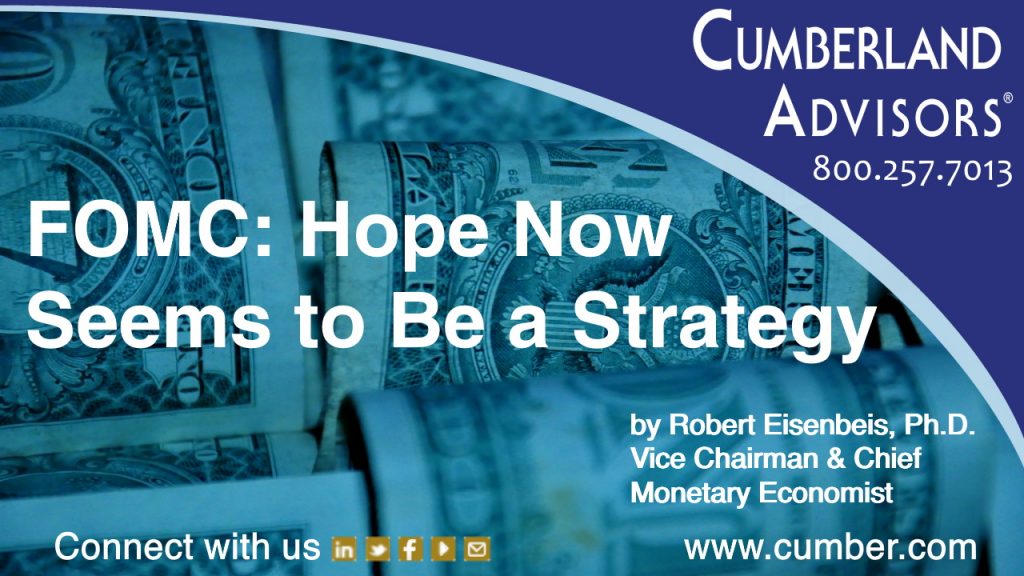The FOMC finished its September deliberations and published its first statement and Summary of Economic Projections (SEPs) since the revision of its policy strategy was announced on the eve of the Kansas City Fed’s annual August Jackson Hole Symposium.
The statement began by reiterating that the FOMC stands ready to employ its full range of tools to promote maximum employment and price stability. The statement went on to discuss the impact that the COVID-19 virus was having on economies around the world and stated that the path of the economy depended upon the course of the virus. Chairman Powell went on to note in his press conference that the virus posed serious risks to the downside and remains a source of policy uncertainty, and he made the case for social distancing and mask wearing.
The meat of the statement reflects the Committee’s new policy emphasis, both by positioning its objective of achieving maximum employment ahead of its 2% inflation objective, and by noting that it would aim to have inflation run “modestly above 2% for some time so that it averages 2%.” The Committee also emphasized that it was important that inflation be anchored at 2%. Finally, the Committee provided additional forward guidance about the future state of policy. It stated that rates would remain low until its objectives were achieved and that inflation would be likely to moderately exceed 2%. The SEP projections indicated that the target range for the federal funds rate would remain in the 0–.25% range through 2023. Finally, the Fed would continue its monthly asset purchases, and Chairman Powell, during the press conference, indicated that $80 billion would be in Treasuries across the curve and $40 billion in agency MBS, so as to support the flow of funds to households and businesses.
The telling part of the problem with the new strategy came during the press conference, when Chairman Powell struggled to answer several pointed questions about how long inflation would remain above 2%, how is “moderately above 2%” for inflation defined; how maximum employment is defined, why inflation above 2% didn’t show up in the SEP, and how and under what circumstances the asset purchases program might be stopped. All in all, few if any actual specifics were provided, which leaves us to wonder whether, at this time, the Committee simply hopes it can get inflation up, hopes it can achieve a 2% average rate, and hopes it can get back to full employment sometime in the future. Interestingly, there were two dissents from the statement, from Presidents Kaplan and Kashkari. The former wanted to retain greater policy flexibility beyond the point where the Committee’s objectives have been achieved, and the latter preferred holding the current policy rate until the 2% objective has been achieved.
The question, of course, is that if hope isn’t the best strategy, then what should the Committee do? We have commented on this question before. First, it is a mistake to pursue average inflation, because that measure would lag the progress of actual inflation, posing the unnecessary upside risk that the Committee will always be behind the curve on inflation. This concern is especially important given the lags between policy changes and when they impact the economy. Second, it is a mistake to stick slavishly to an arbitrary 2% number that has no basis in research demonstrating it to be the optimal target, simply because other central banks have adopted a 2% target, too. The argument is that at 2% the Fed has room to make policy changes when needed, without resorting to negative interest rates. But a 2% target, if achieved, is a high-cost option to preserve policy flexibility, in that it doubles the price level approximately every 36 years, according to the rule of 72.
There is nothing wrong with a low-inflation environment. If the Fed wants to use an inflation number like 2% or some other figure as a bright line to trigger policy, that is fine; but at present the Fed should simply concentrate on supporting the real economy.
Robert Eisenbeis, Ph.D.
Vice Chairman & Chief Monetary Economist
Email | Bio
Links to other websites or electronic media controlled or offered by Third-Parties (non-affiliates of Cumberland Advisors) are provided only as a reference and courtesy to our users. Cumberland Advisors has no control over such websites, does not recommend or endorse any opinions, ideas, products, information, or content of such sites, and makes no warranties as to the accuracy, completeness, reliability or suitability of their content. Cumberland Advisors hereby disclaims liability for any information, materials, products or services posted or offered at any of the Third-Party websites. The Third-Party may have a privacy and/or security policy different from that of Cumberland Advisors. Therefore, please refer to the specific privacy and security policies of the Third-Party when accessing their websites.
Sign up for our FREE Cumberland Market Commentaries
Cumberland Advisors Market Commentaries offer insights and analysis on upcoming, important economic issues that potentially impact global financial markets. Our team shares their thinking on global economic developments, market news and other factors that often influence investment opportunities and strategies.


